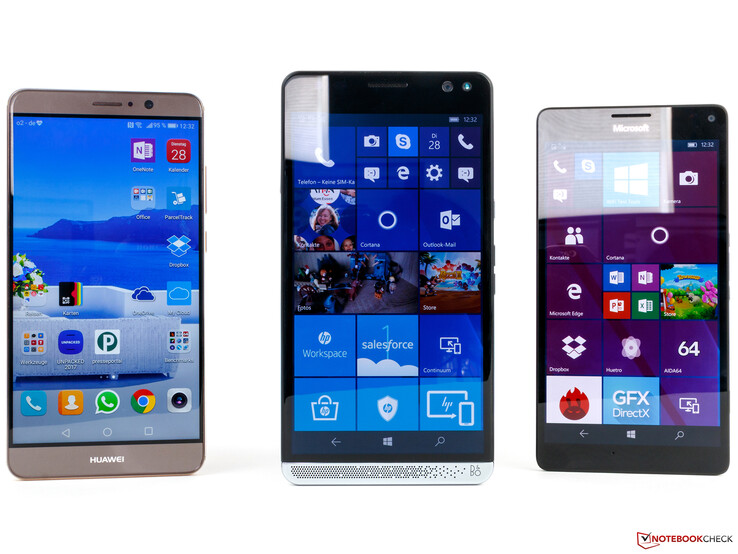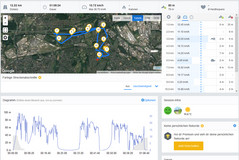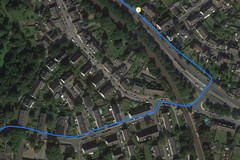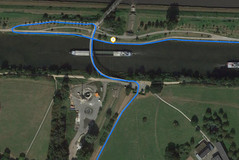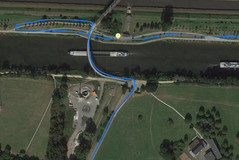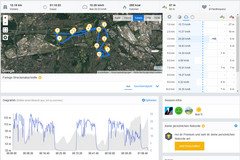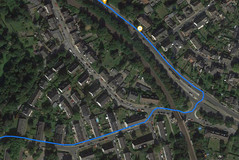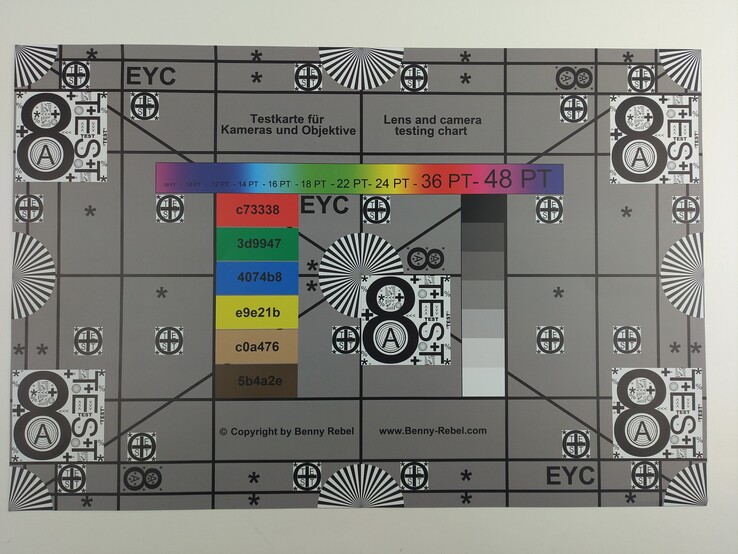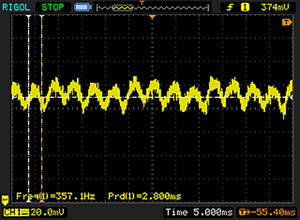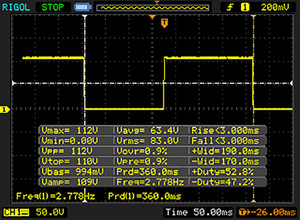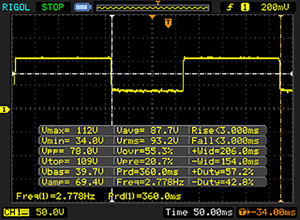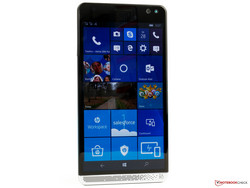Breve Análise do HP Elite x3 Phablet (incl. Lap Dock)
Os Top 10
» Os Top 10 Portáteis Multimídia
» Os Top 10 Portáteis de Jogos
» Os Top 10 Portáteis Leves para Jogos
» Os Top 10 Portáteis Acessíveis de Escritório/Empresariais
» Os Top 10 Portáteis Premium de Escritório/Empresariais
» Os Top 10 dos Portáteis Workstation
» Os Top 10 Subportáteis
» Os Top 10 Ultrabooks
» Os Top 10 Conversíveis
» Os Top 10 Tablets
» Os Top 10 Smartphones
» A melhores Telas de Portáteis Analisadas Pela Notebookcheck
» Top 10 dos portáteis abaixo dos 500 Euros da Notebookcheck
» Top 10 dos Portáteis abaixo dos 300 Euros
Size Comparison
| |||||||||||||||||||||||||
iluminação: 92 %
iluminação com acumulador: 268 cd/m²
Contraste: 1072:1 (Preto: 0.25 cd/m²)
ΔE ColorChecker Calman: 7.9 | ∀{0.5-29.43 Ø4.78}
ΔE Greyscale Calman: 6.9 | ∀{0.09-98 Ø5}
Gamma: 2.12
CCT: 7143 K
| |||||||||||||||||||||||||
iluminação: 90 %
iluminação com acumulador: 333 cd/m²
Contraste: ∞:1 (Preto: 0 cd/m²)
ΔE ColorChecker Calman: 7.9 | ∀{0.5-29.43 Ø4.78}
ΔE Greyscale Calman: 6.9 | ∀{0.09-98 Ø5}
Gamma: 2.12
CCT: 7143 K
Cintilação da tela / PWM (modulação por largura de pulso)
| Tela tremeluzindo/PWM detectado | 357.1 Hz | ||
A luz de fundo da tela pisca em 357.1 Hz (pior caso, por exemplo, utilizando PWM) . A frequência de 357.1 Hz é relativamente alta, portanto, a maioria dos usuários sensíveis ao PWM não deve notar nenhuma oscilação. No entanto, há relatos de que alguns usuários ainda são sensíveis ao PWM em 500 Hz e acima, portanto, esteja atento. [pwm_comparison] Em comparação: 53 % de todos os dispositivos testados não usam PWM para escurecer a tela. Se PWM foi detectado, uma média de 8118 (mínimo: 5 - máximo: 343500) Hz foi medida. | |||
Exibir tempos de resposta
| ↔ Tempo de resposta preto para branco | ||
|---|---|---|
| 6 ms ... ascensão ↗ e queda ↘ combinadas | ↗ 3 ms ascensão | |
| ↘ 3 ms queda | ||
| A tela mostra taxas de resposta muito rápidas em nossos testes e deve ser muito adequada para jogos em ritmo acelerado. Em comparação, todos os dispositivos testados variam de 0.1 (mínimo) a 240 (máximo) ms. » 17 % de todos os dispositivos são melhores. Isso significa que o tempo de resposta medido é melhor que a média de todos os dispositivos testados (20.2 ms). | ||
| ↔ Tempo de resposta 50% cinza a 80% cinza | ||
| 6 ms ... ascensão ↗ e queda ↘ combinadas | ↗ 3 ms ascensão | |
| ↘ 3 ms queda | ||
| A tela mostra taxas de resposta muito rápidas em nossos testes e deve ser muito adequada para jogos em ritmo acelerado. Em comparação, todos os dispositivos testados variam de 0.165 (mínimo) a 636 (máximo) ms. » 17 % de todos os dispositivos são melhores. Isso significa que o tempo de resposta medido é melhor que a média de todos os dispositivos testados (31.6 ms). | ||
| AnTuTu v6 - Total Score (classificar por valor) | |
| HP Elite x3 | |
| Huawei Mate 9 | |
| Microsoft Lumia 950 XL | |
| Lenovo Moto Z | |
| LG G6 | |
| Apple iPhone 7 Plus | |
| Samsung Galaxy S8 Plus | |
| GFXBench (DX / GLBenchmark) 2.7 | |
| T-Rex Onscreen (classificar por valor) | |
| HP Elite x3 | |
| Huawei Mate 9 | |
| Microsoft Lumia 950 XL | |
| Lenovo Moto Z | |
| LG G6 | |
| Apple iPhone 7 Plus | |
| Samsung Galaxy S8 Plus | |
| 1920x1080 T-Rex Offscreen (classificar por valor) | |
| HP Elite x3 | |
| Huawei Mate 9 | |
| Microsoft Lumia 950 XL | |
| Lenovo Moto Z | |
| LG G6 | |
| Apple iPhone 7 Plus | |
| Samsung Galaxy S8 Plus | |
| GFXBench 3.0 | |
| on screen Manhattan Onscreen OGL (classificar por valor) | |
| Huawei Mate 9 | |
| Microsoft Lumia 950 XL | |
| Lenovo Moto Z | |
| LG G6 | |
| Apple iPhone 7 Plus | |
| Samsung Galaxy S8 Plus | |
| 1920x1080 1080p Manhattan Offscreen (classificar por valor) | |
| Huawei Mate 9 | |
| Microsoft Lumia 950 XL | |
| Lenovo Moto Z | |
| LG G6 | |
| Apple iPhone 7 Plus | |
| Samsung Galaxy S8 Plus | |
| GFXBench 3.1 | |
| on screen Manhattan ES 3.1 Onscreen (classificar por valor) | |
| HP Elite x3 | |
| Huawei Mate 9 | |
| Lenovo Moto Z | |
| LG G6 | |
| Apple iPhone 7 Plus | |
| Samsung Galaxy S8 Plus | |
| 1920x1080 Manhattan ES 3.1 Offscreen (classificar por valor) | |
| HP Elite x3 | |
| Huawei Mate 9 | |
| Lenovo Moto Z | |
| LG G6 | |
| Apple iPhone 7 Plus | |
| Samsung Galaxy S8 Plus | |
| Octane V2 - Total Score (classificar por valor) | |
| HP Elite x3 | |
| Huawei Mate 9 | |
| Microsoft Lumia 950 XL | |
| Lenovo Moto Z | |
| LG G6 | |
| Apple iPhone 7 Plus | |
| Samsung Galaxy S8 Plus | |
| WebXPRT 2015 - Overall (classificar por valor) | |
| HP Elite x3 | |
| Huawei Mate 9 | |
| Microsoft Lumia 950 XL | |
| Lenovo Moto Z | |
| LG G6 | |
| Apple iPhone 7 Plus | |
| Samsung Galaxy S8 Plus | |
| Mozilla Kraken 1.1 - Total (classificar por valor) | |
| HP Elite x3 | |
| Huawei Mate 9 | |
| Microsoft Lumia 950 XL | |
| Lenovo Moto Z | |
| LG G6 | |
| Apple iPhone 7 Plus | |
| Samsung Galaxy S8 Plus | |
* ... menor é melhor
(±) A temperatura máxima no lado superior é 44 °C / 111 F, em comparação com a média de 35.2 °C / 95 F , variando de 21.9 a 247 °C para a classe Smartphone.
(+) A parte inferior aquece até um máximo de 37.3 °C / 99 F, em comparação com a média de 34 °C / 93 F
(±) Em uso inativo, a temperatura média para o lado superior é 33.1 °C / 92 F, em comparação com a média do dispositivo de 32.9 °C / ### class_avg_f### F.
HP Elite x3 análise de áudio
(+) | os alto-falantes podem tocar relativamente alto (###valor### dB)
Graves 100 - 315Hz
(-) | quase nenhum baixo - em média 21.8% menor que a mediana
(±) | a linearidade dos graves é média (12.3% delta para a frequência anterior)
Médios 400 - 2.000 Hz
(±) | médios mais altos - em média 9.1% maior que a mediana
(+) | médios são lineares (6.7% delta para frequência anterior)
Altos 2 - 16 kHz
(+) | agudos equilibrados - apenas 3.3% longe da mediana
(±) | a linearidade dos máximos é média (7.3% delta para frequência anterior)
Geral 100 - 16.000 Hz
(±) | a linearidade do som geral é média (25% diferença em relação à mediana)
Comparado com a mesma classe
» 61% de todos os dispositivos testados nesta classe foram melhores, 7% semelhantes, 33% piores
» O melhor teve um delta de 11%, a média foi 35%, o pior foi 134%
Comparado com todos os dispositivos testados
» 76% de todos os dispositivos testados foram melhores, 5% semelhantes, 19% piores
» O melhor teve um delta de 4%, a média foi 24%, o pior foi 134%
Huawei Mate 9 análise de áudio
(+) | os alto-falantes podem tocar relativamente alto (###valor### dB)
Graves 100 - 315Hz
(-) | quase nenhum baixo - em média 24.1% menor que a mediana
(±) | a linearidade dos graves é média (11.1% delta para a frequência anterior)
Médios 400 - 2.000 Hz
(+) | médios equilibrados - apenas 3.2% longe da mediana
(±) | a linearidade dos médios é média (8.6% delta para frequência anterior)
Altos 2 - 16 kHz
(±) | máximos mais altos - em média 10.4% maior que a mediana
(+) | os máximos são lineares (3.8% delta da frequência anterior)
Geral 100 - 16.000 Hz
(±) | a linearidade do som geral é média (25.2% diferença em relação à mediana)
Comparado com a mesma classe
» 62% de todos os dispositivos testados nesta classe foram melhores, 7% semelhantes, 32% piores
» O melhor teve um delta de 11%, a média foi 35%, o pior foi 134%
Comparado com todos os dispositivos testados
» 76% de todos os dispositivos testados foram melhores, 5% semelhantes, 19% piores
» O melhor teve um delta de 4%, a média foi 24%, o pior foi 134%
Apple iPhone 7 Plus análise de áudio
(±) | o volume do alto-falante é médio, mas bom (###valor### dB)
Graves 100 - 315Hz
(-) | quase nenhum baixo - em média 24.1% menor que a mediana
(±) | a linearidade dos graves é média (7.4% delta para a frequência anterior)
Médios 400 - 2.000 Hz
(+) | médios equilibrados - apenas 4.7% longe da mediana
(±) | a linearidade dos médios é média (7.6% delta para frequência anterior)
Altos 2 - 16 kHz
(+) | agudos equilibrados - apenas 4.3% longe da mediana
(+) | os máximos são lineares (6.9% delta da frequência anterior)
Geral 100 - 16.000 Hz
(±) | a linearidade do som geral é média (22% diferença em relação à mediana)
Comparado com a mesma classe
» 45% de todos os dispositivos testados nesta classe foram melhores, 7% semelhantes, 48% piores
» O melhor teve um delta de 11%, a média foi 35%, o pior foi 134%
Comparado com todos os dispositivos testados
» 63% de todos os dispositivos testados foram melhores, 7% semelhantes, 31% piores
» O melhor teve um delta de 4%, a média foi 24%, o pior foi 134%
| desligado | |
| Ocioso | |
| Carga |
|
Key:
min: | |
| HP Elite x3 4150 mAh | Microsoft Lumia 950 XL 3340 mAh | Huawei Mate 9 4000 mAh | Samsung Galaxy S8 Plus 3500 mAh | LG G6 3300 mAh | Apple iPhone 7 Plus 2915 mAh | Lenovo Moto Z 2600 mAh | |
|---|---|---|---|---|---|---|---|
| Power Consumption | -90% | -4% | 31% | 11% | -4% | 29% | |
| Idle Minimum * (Watt) | 0.86 | 2.85 -231% | 0.78 9% | 0.68 21% | 0.62 28% | 0.77 10% | 0.66 23% |
| Idle Average * (Watt) | 1.46 | 2.95 -102% | 2.13 -46% | 1.13 23% | 1.43 2% | 2.04 -40% | 1.01 31% |
| Idle Maximum * (Watt) | 1.59 | 3.26 -105% | 2.17 -36% | 1.16 27% | 1.48 7% | 2.24 -41% | 1.09 31% |
| Load Average * (Watt) | 8.1 | 8.92 -10% | 6.32 22% | 4.69 42% | 5.52 32% | 4.69 42% | 3.97 51% |
| Load Maximum * (Watt) | 9.35 | 9.39 -0% | 6.49 31% | 5.24 44% | 10.47 -12% | 8.66 7% | 8.34 11% |
* ... menor é melhor
| HP Elite x3 4150 mAh | Microsoft Lumia 950 XL 3340 mAh | Huawei Mate 9 4000 mAh | Samsung Galaxy S8 Plus 3500 mAh | Apple iPhone 7 Plus 2915 mAh | LG G6 3300 mAh | Lenovo Moto Z 2600 mAh | |
|---|---|---|---|---|---|---|---|
| Duração da bateria | -21% | 23% | 23% | 13% | 21% | 6% | |
| Reader / Idle (h) | 36.8 | 18 -51% | 25.6 -30% | 26.1 -29% | 30.6 -17% | 29.8 -19% | 22.9 -38% |
| H.264 (h) | 12.7 | 10.2 -20% | 15.8 24% | 12.4 -2% | 13.6 7% | 13 2% | 12.1 -5% |
| WiFi v1.3 (h) | 7 | 6.2 -11% | 12.6 80% | 12.3 76% | 9.8 40% | 11.5 64% | 6.8 -3% |
| Load (h) | 3.1 | 3 -3% | 3.7 19% | 4.6 48% | 3.8 23% | 4.2 35% | 5.3 71% |
Pro
Contra
O HP Elite x3 é um phablet maciço, que a HP anuncia como um tablet e não sem razão. Ele combina um design robusto e funcional para obter uma ferramenta empresarial bem sucedida. Destina-se ao setor de saúde, logística, POS, indústria e, principalmente, trabalhadores móveis que precisam de acesso fácil aos seus dados e que desejam usar o menor número possível de dispositivos.
A última tarefa em particular, o HP Elite x3 domina muito bem, dado que não só pode ser usado como um smartphone, mas também como um cliente fino e com o Lap Dock também como um portátil com algumas limitações. Usá-lo como um portátil não foi muito legal durante o teste. A tela é bastante escura e a reprodução das cores poderia ser melhor. No entanto, gostamos das portas adicionais que transformam o Elite x3 em uma ferramenta de apresentação versátil. A grande bateria no Lap Dock também é uma vantagem.
O HP Elite x3 é um phablet robusto com uma forte base de hardware que representa uma solução empresarial bem sucedida para muitas áreas corporativas.
O HP Elite x3 não possui fraquezas reais, pois combina recursos de segurança abrangentes com uma plataforma móvel relativamente segura: Windows 10 Mobile. Apesar da pouca importância que o sistema operacional possa ter para o consumidor privado, é fácil para empresas de médio e grande porte integrar o dispositivo em sua infraestrutura de TI existente e administrá-lo. Além disso, recebe atualizações de segurança regularmente. Mas, mesmo para as pequenas empresas e os trabalhadores autônomos, a HP oferece uma entrada comparativamente acessível na computação em nuvem com o Workspace, o que torna desnecessária a compra e manutenção de hardware adicional. Isso é completado por vários produtos de garantia e serviço. O preço está a partir de cerca de 790 Libras.
No entanto, como produto de consumo, só podemos recomendar o phablet para os fanáticos Hard-core do Windows.
HP Elite x3
- 06/02/2017 v6 (old)
Daniel Schmidt




